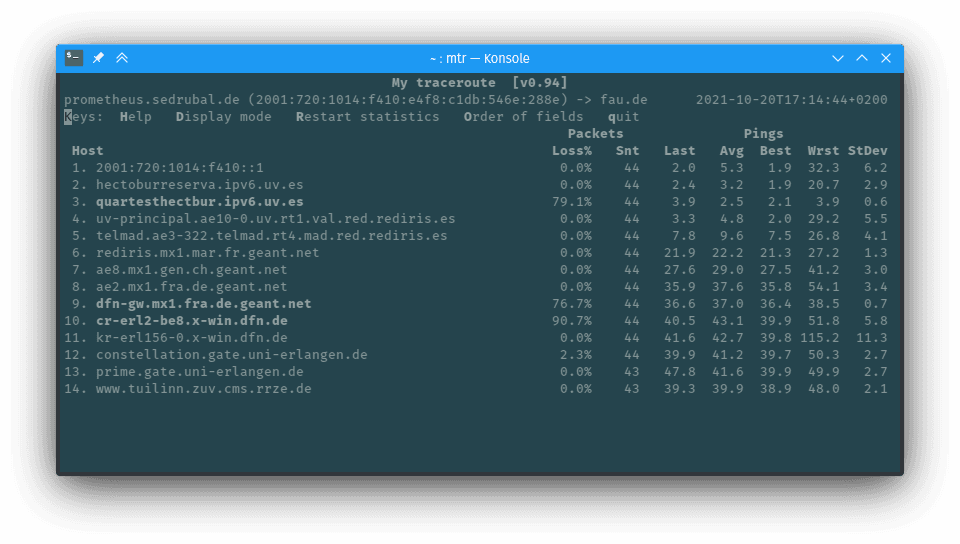During the last months, I had two pleasant experiences with a great achievement of universities all around the world: Eduroam. Exactly in the time in which I had to write my master's thesis, I made a trip to Spain for 3 weeks. I visited the library of the Universitat de Valéncia (UV), one of the oldest and largest universities in that country. The distance to my home university was about 1500 km but I felt as I was at home: Once opened the laptop it was connected to "eduroam" - a high quality WiFi Network for research and education institutions.
This is possible because of the collaboration of regional networks for research and education: The UV ist part of the Spanish network RedIRIS. As I had to work on the servers located at the university of Erlangen and Nuremberg (FAU), I was of course interested in the network path between UV and "home": RedIRIS is connected with the european high-speed backbone for research and educational institutions called GÉANT. They forwarded my traffic through France. In Germany, universities are interconnected through the German Research Network (DFN). DFN and GÉANT have a point of peering in Erlangen.
It is interesting that on the entire network path no commercial provider is involved. The good peering between research networks lead to a high data rate and low latency. The user experience is even better than if you access services of the FAU from one of the student dormitories in Erlangen. Little by little they are migrated from a direct connection to the university to commercial providers.
Eduroam (EDUcation ROAMing) started in 2002 as european project. I grew and grew and meanwhile universities from all continents are part of it. It is possible to authenticate with the credentials given by the home university. The credentials are sent to the home university and verified against the user database. This procedure is called roaming. It is implemented by an hierarchical system of RADIUS servers.
I had a similar experience a few months later when I stayed in North Rhine-Westphalia for some weeks before travelling to Namibia. I still worked for the FAU. Therefore, I visited the library of the Universität Duisburg-Essen. After opening the laptop, it was connected to eduroam and I could start working as if I was sitting in my office at FAU.


